The lifeblood of an association member data program is transparency and trust. Nowhere is this seen more than in a productive association statistics group meeting. When you create an environment where competitors can work together safely for a common cause, trust in your association and the insights you help deliver will be elevated.
Much like how associations are built on relationships, the delicate interplay among participants in a data program will ultimately tell how much the group can achieve together. These relationships and your contributions to fostering them are essential to a healthy, productive industry.
This post begins a series on effective data program meetings, which we hope will illuminate the basics and finer points of this critical component of our work. Since 1985, we have attended hundreds of statistics meetings in all corners of the globe and online. Some of our most treasured professional and personal moments have come at meetings that might not sound all that exciting on paper. This is where culture is built, work is advanced, and lifetime friendships are formed. (Who said this was all just number crunching and pie charts?)
In this installment, we’ll discuss some of the preparations behind the scenes.
Know the Rules
Your association is critical in facilitating safe, legally compliant information sharing among competitors. In fact, your members might not be able to have a program like this without your help!
As Spider-Man reminds us, “With great power comes great responsibility”. You protect all parties by ensuring that the rules of your program are easy to understand and follow. Use clear, unambiguous language. Enforce your rules as they are written, as even-handedly and transparently as possible. Give your members a hand in crafting and enforcement.
Like a flight attendant reviews the safety instructions before takeoff, a cursory review of the rules is your first agenda item at any stats meeting where competitors are assembled. (Drinks and snacks can come later.)
Be Open and Welcoming
Newcomers to industry forums like these may find the experience intimidating at first. Your job as facilitator is to ensure that new representatives don’t linger on the sidelines of the party. Remember that everyone at the meeting was once a “newbie” navigating the program rules, the social dynamics of the group, and numbers that they didn’t fully understand.
An orientation session for new members can go a long way to smoothing the onboarding process. Your more established members will undoubtedly be happy to lend a hand here. This rare chance to share their unique expertise is fun and rewarding.
Encourage Continuity and Focus
Wherever possible, encourage your members to send stable representation to your meetings. When it comes to members, quality and consistency matter. You need representatives who show up reliably, speak authoritatively for their companies, negotiate in good faith with their peers, and take their responsibility seriously. Ideally, this role should not be assigned to a new person for each meeting. Personal relationships matter for the health of the industry.
In-person meetings are no longer the only way to accomplish these goals (more on this in future posts), but they have long been a critical part of our work. Focused time away from the office, face-to-face with peers, remains a rewarding way to build community and quickly eliminate misunderstanding.
Make It Comfortable
Most associations are familiar with the basics of member hospitality. Addressing the comfort and accessibility needs of all participants is one of your primary responsibilities on meeting day.
A productive meeting room is easy to find, accessible to all, and close to supporting facilities such as restrooms. It has adequate seating and tabletop space, working climate controls, and places to plug in laptops. Other helpful features include places to hang coats and temporarily deposit luggage for members departing the meeting for trips.
As hosts, it is helpful to remind attendees to place their devices in “do not disturb” mode for the duration of the meeting. Don’t forget to factor in breaks for people to grab a snack, network, check email, or get a breath of fresh air.
In a future post, we will discuss the technology components of the meeting room experience – AV, Internet access, and hybrid meeting tips.
Make It Fun
Speaking of encouraging personal relationships, all work and no play make for dull meetings. Mixing in some casual time for networking and dining helps build your industry team – company representatives, association staff, and supporting partners (like us). It’s also where ice is broken, colleagues become friends, and personal trust is made.
It’s common to see life-long bonds made at post-meeting dinners and group outings. The people at your meetings have much in common – similar backgrounds and jobs – and they tend to have a lot of fun together. You will never find a better time to get to know and understand your members than when they’re relaxed and enjoying themselves. Use this opportunity to its fullest!
Next Time
We’ll dive into some procedural work with meeting agendas and minutes. Some helpful tools will be included to get started, stay organized, and maximize your effectiveness.

